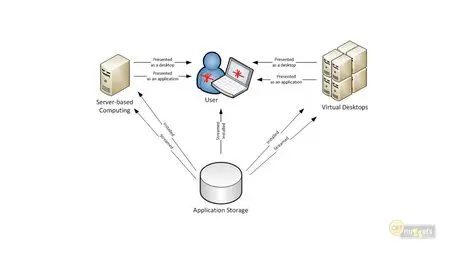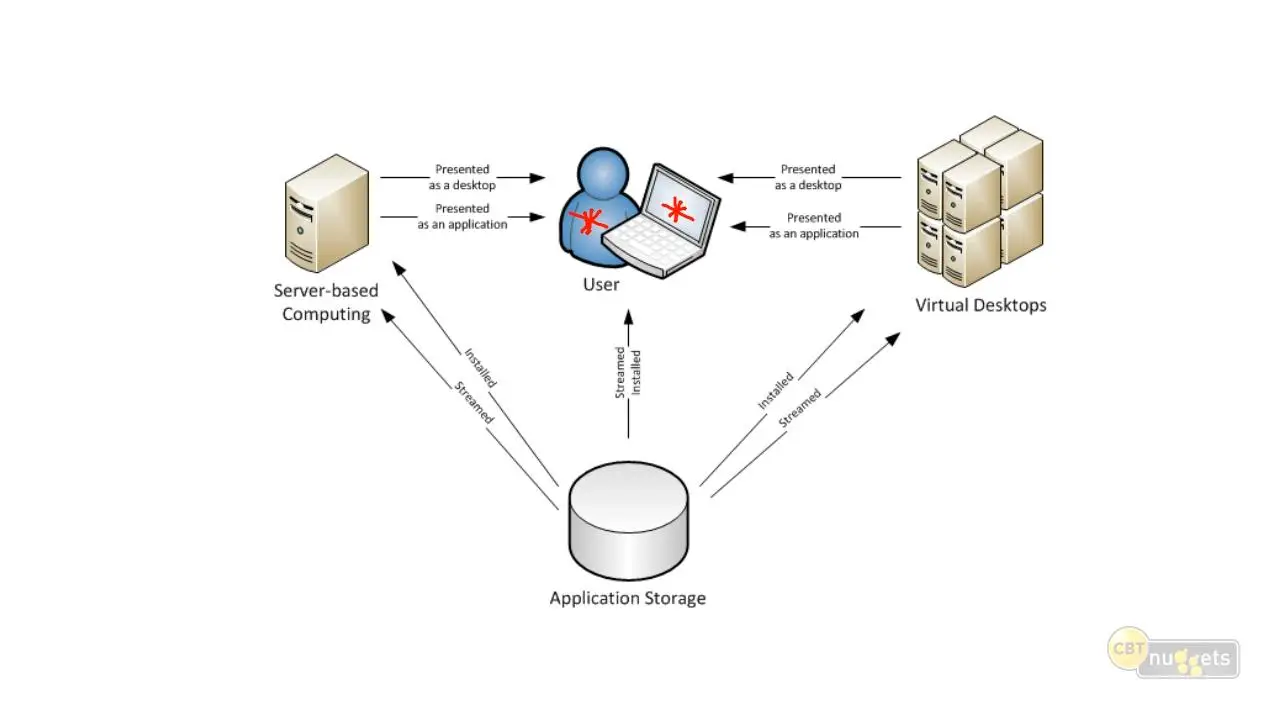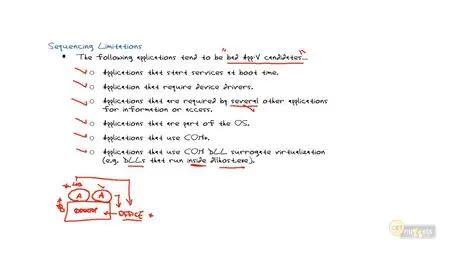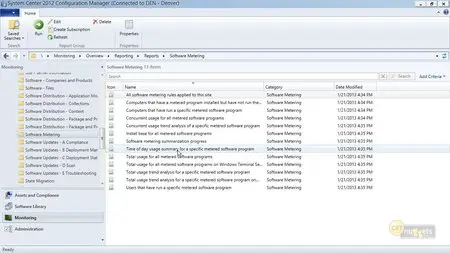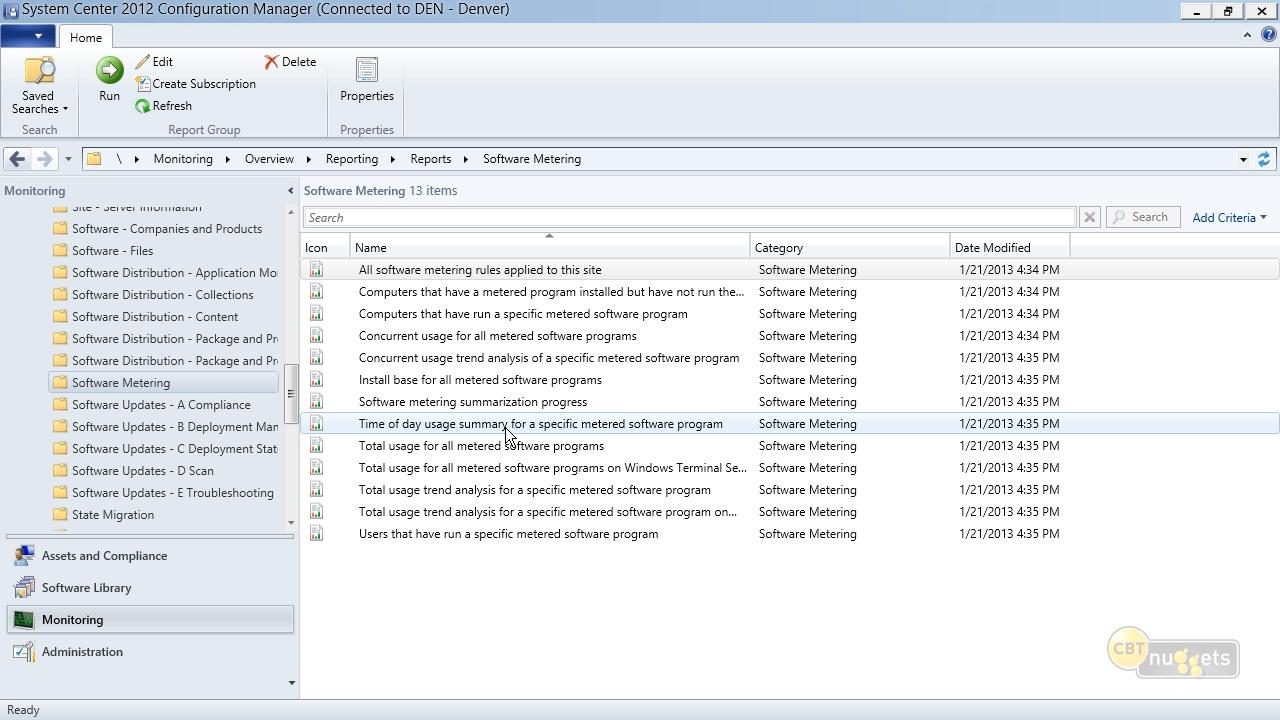Microsoft Windows Server 2012 70-416: Implementing Desktop Application Environments
English | flv | H264 1280x720 | AAC 1 ch | 8 hrs 33 min | 1.95 GB
eLearning
English | flv | H264 1280x720 | AAC 1 ch | 8 hrs 33 min | 1.95 GB
eLearning
You are IT’s most valuable person. Without you, there are no desktops. Without you, servers have no applications. Users aren’t users. Without you, there is no IT infrastructure.
For far too long, IT’s server administrators have basked alone in the technological limelight. For too long, they’ve sat at the pinnacle of IT’s meritocracy. Bah! Let them have it. There’s a secret we desktop administrators hold dear: There is no pinnacle without a solid foundation.
That foundation is desktop administration. That foundation is you, soon-to-be MCSE.
You know that desktop administration is a quiet, yet powerful IT skillset. Working in the shadows, the expert desktop administrator manifests calm through the storm of never-ending configuration change. The expert desktop administrator wields Windows with a depth of knowledge unsurpassed among peers. Adeptly packaging software while sequencing even the most-challenging of applications, the expert desktop administrator delivers each to meet exactly the needs of their user.
Group Policy Software Installation, Configuration Manager, App-V, RDS RemoteApps, and Microsoft VDI: The expert desktop administrator is the glue that keeps business running on time and under budget.
That’s you, soon-to-be MCSE, and you’re one exam away from certifying your infinite wisdom. Microsoft’s 70-416 exam is the fifth and final stop in your long quest to become an MCSE: Desktop Administrator.
Are you ready to become IT’s most valuable person?
If you are, join veteran CBT Nuggets guru Greg Shields and step through this exploration of Implementing Desktop Application Environments. Greg’s been packaging software since there’s been software to package. He’s a globally-recognized expert on all things virtualization. And, with his easy-going style and copious experience to share, he’s one of our most-celebrated instructors.
Join him in this short, sweet, and laser-targeted series that’ll supercharge your certification preparation without the nasty brain dump. Your MCSE: Desktop Administrator awaits.
Introduction to the MCSE: Desktop Administrator and the 70-416 Exam
There is no infrastructure without the desktop administrator, but there is no MCSE without the requisite exams. Microsoft’s 70-416 is the fifth and final exam in the MCSE: Desktop Administrator series, but it is also an exploration into the art of managing Windows. Greg kicks of this series with a look at the exam objectives, a review of the environments you’ll be creating, and a map to guide your test prep. 00:27:09
Designing an Application Distribution Strategy
It wasn’t that many years ago when “application delivery” meant walking around hallways, DVDs in hand. So much has changed in such a short time. These days, the sheer number of ways that users can be connected to applications has exploded. Automated installation with ConfigMgr, app virtualization with App-V, even remote delivery with RDS RemoteApps—the desktop administrator’s hardest task these days is designing the right distribution strategy. Join Greg in this Nugget to better understand your design considerations including impact on clients, offline access, deployment infrastructure, and remote locations, as well as planning for updates to applications. 00:30:28
Planning and Implementing Application Compatibility
Most of Windows’ application compatibility work was necessary with the move off Windows XP. Windows Vista, Windows 7, and Windows 8 all share a common codebase that keeps most (but not all) applications compatible. In this Nugget, learn how to configure and implement the Microsoft Assessment and Planning Toolkit (MAP), the “app compat” planning considerations including RDS, VDI, Client Hyper-V, Application Compatibility Toolkit (ACT), and 32 bit vs. 64 bit, and how to plan for application version co-existence. 00:32:53
Deploying Applications to the Desktop Part 1 - Group Policy
Group Policy is awesome because it is already everywhere. If you have Active Directory, then you have Group Policy. But while omnipresent, Group Policy Software Installation isn’t the most…fully-featured…of a solution for delivering software. Learn its strengths—and its weaknesses—in this Nugget as you learn to publish and/or assign software using GPOs. 00:30:41
Deploying Applications to the Desktop Part 2 - ConfigMgr 2012
Configuration Manager 2012 SP1 doesn’t come cheap, but boy is it worth the extra effort and expense. Now in its fifth major release, ConfigMgr is the undisputed heavyweight in Windows application delivery and desktop configuration control. In this Nugget, Greg explains how to configure package advertisements and applications using System Center 2012 Configuration Manager. You’ll learn how ConfigMgr 2012’s new Software Center and Application Catalog can revolutionize how users request, install, uninstall, and self-service their entire application needs. 00:31:11
Planning and Implementing Application Updates
Call them updates or call them patches, they’re still software that needs installing. Considering today’s ever-looming threat of hacks, exploits, and software vulnerabilities, the expert desktop administrator has to keep on top of planning and implementing every application update. Refresh your skills in the tools of the trade. In this Nugget, Greg explains how to configure System Center 2012 Updates Publisher, deploy updates by using System Center 2012 Configuration Manager, and configure WSUS for application updates. 00:21:20
Planning and Implementing Application Upgrades
Most days there are updates, but every so often an application needs a wholesale upgrade. That’s where you, soon-to-be MCSE, get your opportunity to shine. Learn the automation tricks in this Nugget to mitigate compatibility issues, plan for application version co-existence, decommission applications, migrate documents, migrate Microsoft Office applications using Office Migration Planning Manager (OMPM) and Telemetry Dashboard, deploy application upgrades by using Group Policy, and migrate application settings and configurations. 00:19:03
Implementing Applications Security
Security and applications are often two different IT departments, even as they’re inexorably linked responsibilities. The expert desktop administrator knows the tools and tactics to lock down their application environment. In this nugget Greg reviews some of the tools available inside Windows and Group Policy. You’ll get a quick peek at configuring AppLocker policies, Software Restriction Policies (SRP), User Account Control (UAC) settings, Data Execution Prevention (DEP) settings, the Windows Firewall with Advanced Security, and System Center 2012 Endpoint Protection settings. 00:31:26
Preparing Virtual Applications
Packaging an application for traditional delivery is a lot like sequencing it for App-V, but there are a few important differences. App-V’s app virtualization evolves the relationship between applications and desktops, so for success you’ll need the knowledge to install and configure the App-V sequencer environment, prepare applications for deployment in different environments, and sequence applications. 00:42:58
Installing and Configuring Application Virtualization Environments
App-V is an impressively powerful tool for delivering applications without impacting desktop configurations. Using it correctly requires care. In this Nugget, Greg shows you the planning considerations including choosing a protocol to deploy virtual applications (file server or streaming). He explains the tactics behind configuring App-V modes (stand-alone, lightweight, and enterprise), installing an App-V infrastructure, configuring GPO settings for App-V, and deploying an App-V client for Remote Desktop Session Hosts. 00:22:53
Managing Application Virtualization Environments
With an App-V environment fully assembled, it’s time to start delivering virtualized applications. The App-V management interface is deceivingly simple, so pay careful attention in this Nugget as Greg explains how to configure App-V, manage the App-V client application cache, and re-sequence/redeploy applications. He’ll discuss configuring virtual application interaction and sharing, System Tray / SFTTray.exe switches (which are handled through PowerShell in App-V 5), application extensions with virtualized applications, and application settings using group policies. 00:19:56
Designing and Implementing a Resilient Virtual Application Delivery Infrastructure
App-V can be a just-in-time delivery system for many of your mission-critical applications. Yet “just-in-time” also means “must always be ready." Protect your App-V infrastructure from downtime by learning to design and implement a highly available App-V data store and management server, implement pre-populated/shared cache App-V functionality for the VDI environment, implement a highly available content share, and implement a branch office strategy using App-V. 00:15:02
Working with App Virtualization in ConfigMgr 2012
Bonus Nugget! Microsoft’s 70-416 exam tests against your knowledge of App-V by itself, but many IT organizations will take advantage of this tool from within Configuration Manager 2012 SP1. Much of App-V’s functionality is baked right in. It’s for this reason that Greg goes off-script for a quick bonus Nugget on how App-V works when it’s working inside ConfigMgr. While you won’t learn much about the 70-416 exam in this quick Nugget, you’ll gain invaluable experience on ConfigMgr deployment types that will last long past your final MCSE exam is complete. 00:17:26
Planning and Implementing Presentation Virtualization Servers
Not every application works best when installed locally. Some are better kept behind the locked doors of your datacenter. For these, RemoteApps atop Microsoft’s Remote Desktop Services are the best practice for connecting users…anywhere…with their resources. Greg is a multi-year recipient of Microsoft’s Most Valuable Professional (MVP) award with a focus in Remote Desktop Services. He shares from his wealth of experience in this Nugget to help you install and configure the Remote Desktop Session Host (RDSH), install and configure Remote Desktop Web Access (RDWA), configure the Remote Desktop Connection Broker (RDCB) for the Remote Desktop Session Host, perform capacity analysis, and configure Remote Desktop Session Host server security. 00:30:14
Creating and Configuring Remote Applications
RDSH is the core of RDS, the Terminal Services to its Terminal Server. Today’s RDSH, though, is far more powerful than your ancestor’s Terminal Services. RDSH today favors RemoteApps over publishing entire desktops, eliminating complexities and confusion for users. But using RDSH correctly requires wisdom. Get your wisdom in this Nugget as you prepare Remote Desktop Session Hosts for application installation, configure RemoteApp properties, configure file extension associations, sign packages with certificates, and implement application version co-existence by using Remote Desktop Web Access. 00:25:37
Deploying and Managing Remote Applications
You’ve installed RDSH. You’ve installed applications. You’ve created RemoteApps. One step remains: Seamlessly connecting your users with your RemoteApp infrastructure. Notably, the best ways of doing so aren’t entirely the most obvious. Accelerate your RDSH experience with Greg as he explains how to configure RemoteApp and Desktop Connections settings, configure GPOs for signed packages, subscribe to RemoteApp and Desktop Connections (RADC) feeds, and export and import RemoteApp configurations. You’ll learn why the RADC’s much-improved user experience is a primary reason the expert desktop administrator no longer need to deploy RemoteApp distribution files (MSI or RDP). 00:19:52
Designing and Implementing a Resilient Remote Desktop Infrastructure
RDS offers server-based computing, which (like App-V) means “always-on” computing. With users connecting from anywhere with a network, you’ll need a highly-available RDS infrastructure to avoid downtime. In this Nugget Greg explains how to design highly available Remote Desktop Web Access, Remote Desktop Connection Broker, and Remote Desktop Gateway, perform backup and recovery of the Remote Desktop Licensing (RDL) server, and configure virtual machine and dedicated farm redirection. 00:25:16
Monitoring Applications
It’s 2:17 a.m. Do you know where your applications are? Your monitoring does, if you’ve built it correctly. With a delivery infrastructure spanning ConfigMgr, App-V, and RDS, you’ll need some powerful monitoring if you’re to keep track of how those apps get used. Figure out the tricks you'll need in this Nugget to monitor Remote Desktop Session Host sessions, offline application usage, real-time sessions, application licensing usage, as well as how to configure Asset Intelligence Service (AIS) in System Center 2012 Configuration Manager. 00:20:33
Designing and Implementing Business Continuity for Virtual Desktops
Sometimes a remote application just isn’t meant for RDS. Maybe it won’t install, or doesn’t play well with others in a multi-session environment. Or, perhaps it just works better when installed not to a server but to a Windows desktop. In any of these cases, VDI becomes your application delivery approach of last resort. But virtual desktops are no trivial installation. They come with many moving parts, the loss of any could create big-time downtime. In this Nugget, Greg teaches you how to design and implement business continuity for personal and shared desktop collections, as well as how to design and implement Hyper-V Replica with Hyper-V Replica Broker. 00:27:34
Updating Applications in Desktop Images
One final Nugget, and one final exam. You’re so close to certifying your desktop administration expertise. All that’s left is a quick spin through the tips, tricks, and tactics for updating apps inside your desktop images. You might be surprised at the variety of ways you can. In this final exam-prep Nugget, you’ll learn the steps to update MDT task sequences, configure online servicing, configure offline VM servicing, and how to apply patches offline.
Screenshots:




